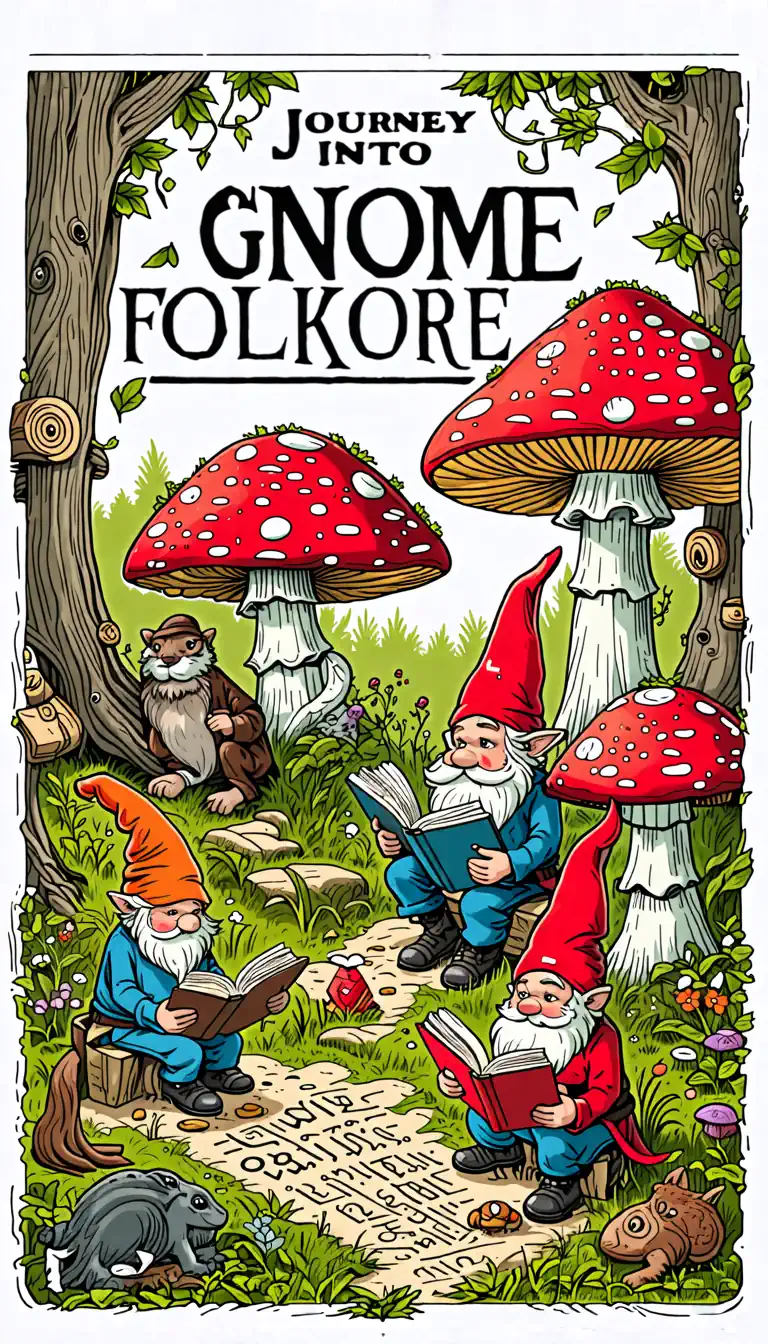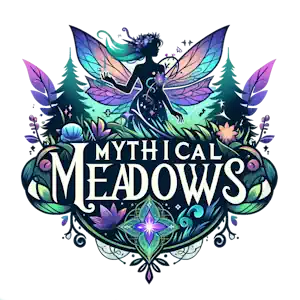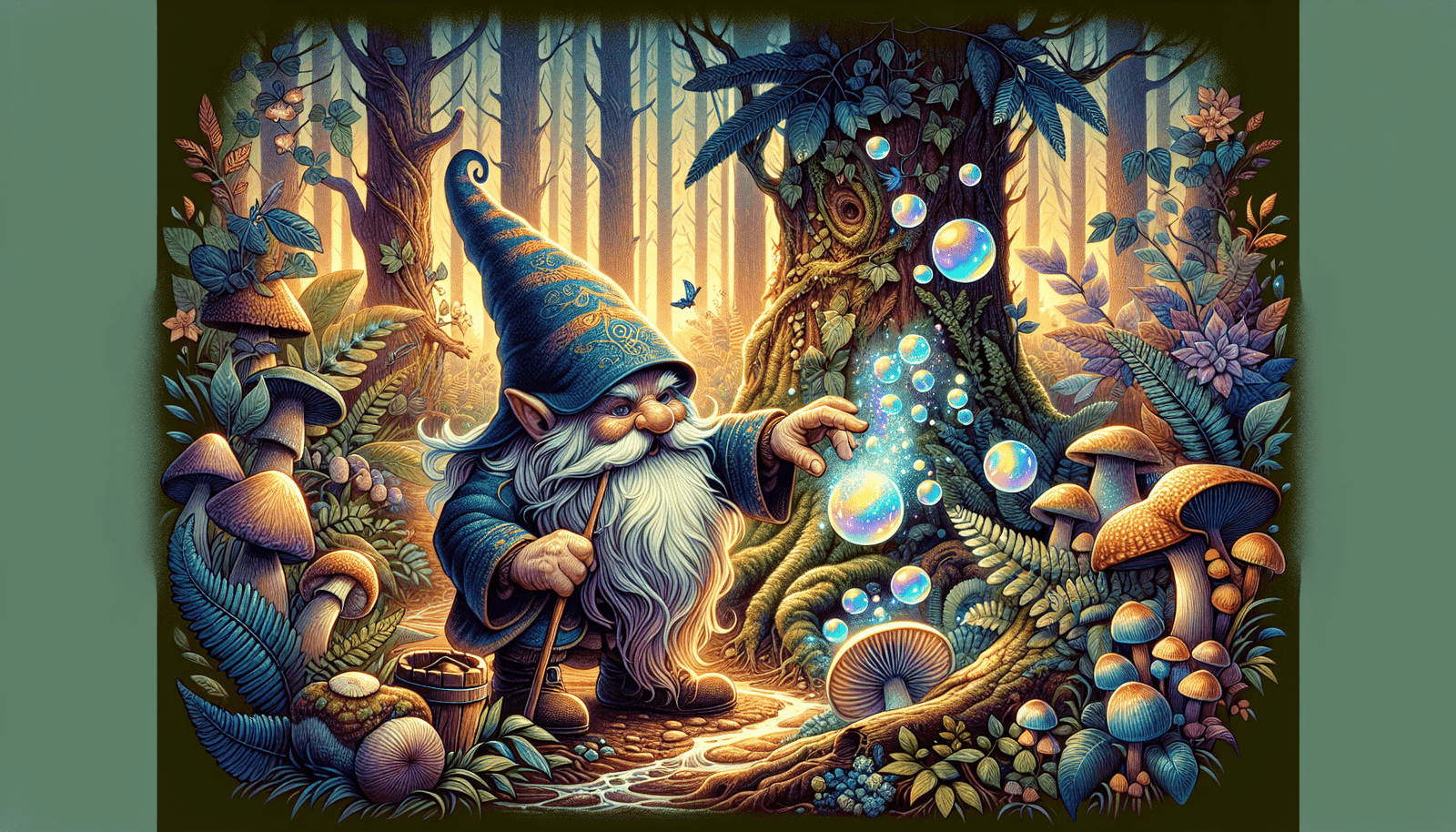In “Journey into Gnome Folklore,” you will be whisked away on a delightful journey through the mysterious realm of these whimsical creatures. From ancient folklore to modern-day tales, this article uncovers the rich history and enduring fascination surrounding gnomes. Prepare to be enchanted as the secrets of these mythical beings are revealed, unveiling a world filled with wonder, magic, and timeless charm.
The Origins of Gnomes
Gnomes have a rich history deeply rooted in ancient beliefs and pagan origins. These mythical creatures have fascinated people for centuries, captivating their imaginations and leaving them in awe of their mysterious existence. The exact origins of gnomes are unclear, but they can be traced back to various cultures around the world. Let us explore the intriguing world of gnomes, uncovering the secrets of their folklore.
Ancient Beliefs and Pagan Origins
The concept of gnomes can be traced back to ancient civilizations and pagan beliefs. These diminutive creatures were often associated with the earth and natural elements. In folklore, gnomes were considered to be guardians of the earth and all its treasures. They were believed to have immense knowledge of hidden underground riches, making them protectors of various treasures and hidden knowledge.
Variations of Gnomes in Different Cultures
Gnomes may have originated from a shared belief in ancient times, but they have taken on various forms and names across different cultures. In Norse mythology, gnomes were known as “Tomte” or “Nisse,” small beings believed to bring good fortune to those who treated them kindly. Germanic folklore introduced “Heinzelmännchen,” household spirits known for their mischievous nature. Slavic culture brought forth “Leshy” and “Domovoi,” spirits associated with forests and homes, respectively. These variations showcase the diverse interpretations of gnomes throughout the world.
Gnome-Like Creatures in Mythology
Gnomes, in their familiar form, may have evolved from various mythological creatures. Dwarves, prominent in Norse mythology, shared similarities with gnomes. Known for their short stature and underground dwellings, dwarves possessed incredible craftsmanship skills. Germanic folklore introduced “Kobolds,” similar to gnomes but often associated with mining and protecting household possessions. Scottish folktales celebrated “Brownies,” which were household spirits believed to help with chores and ward off evil. These fascinating connections between gnomes and other mythical creatures further highlight their enduring presence in mythology.
Physical Characteristics of Gnomes
Gnomes are characterized by their small stature and unique physical features. Despite their size, they possess proportionate features that distinguish them from other creatures in folklore. Let’s delve into the physical aspects that make gnomes so enchanting.
Small Stature and Proportionate Features
Gnomes are typically depicted as small, ranging from a few inches to a foot in height. Their short stature allows them to move swiftly, especially in natural environments where they blend seamlessly. Despite their small size, gnomes possess proportionate features that mirror those of human beings. These features include arms, legs, and facial structures, making them appear like tiny versions of humans.
Distinctive Clothing and Accessories
Gnomes are well-known for their distinctive attire, which adds to their charm and whimsical appearance. They often sport pointy hats, which are believed to grant them mystical powers and protect them from harm. Gnomes also adorn themselves in vibrant-colored clothing, incorporating elements of nature such as leaves, flowers, and mushrooms into their outfits. These clothing choices further reinforce their association with the natural world, showcasing their connection to the earth and its wonders.
Variations in Appearance
While gnomes generally possess similar physical characteristics, there are variations in their appearances across different cultures and folklore. In some depictions, gnomes have long, white beards that lend them a wise and mystical aura. Others may have pointed ears or elongated noses, accentuating their whimsical and fantastical traits. These variations in appearance reflect the diverse interpretations of gnomes, enabling each culture to infuse their unique characteristics into these mythical beings.
Gnomes in Folklore and Legends
Folklore and legends are replete with stories of gnomes and the roles they play in the world. From being guardians of the earth to protectors of hidden treasures, gnomes have captured the imaginations of storytellers and listeners alike. Let’s delve into the different roles gnomes play in folklore.
Guardians of the Earth and Nature
Gnomes are often revered as guardians of the earth and nature. They were believed to have a deep connection with the natural world, possessing the ability to communicate with plants and animals alike. In folklore, gnomes were said to protect the forests and ensure the balance of nature was maintained. Their presence was believed to bring good fortune to those who respected and cared for the earth.
Protectors of Treasures and Hidden Knowledge
Gnomes were associated with treasures and hidden knowledge, making them valuable protectors of these sacred elements. Legends suggest that gnomes guarded secret underground passages leading to hidden riches, using their innate magic and knowledge to ensure these treasures remained concealed. Their ability to navigate the underground realm made gnomes indispensable in preserving hidden knowledge and ensuring it was passed down through generations.
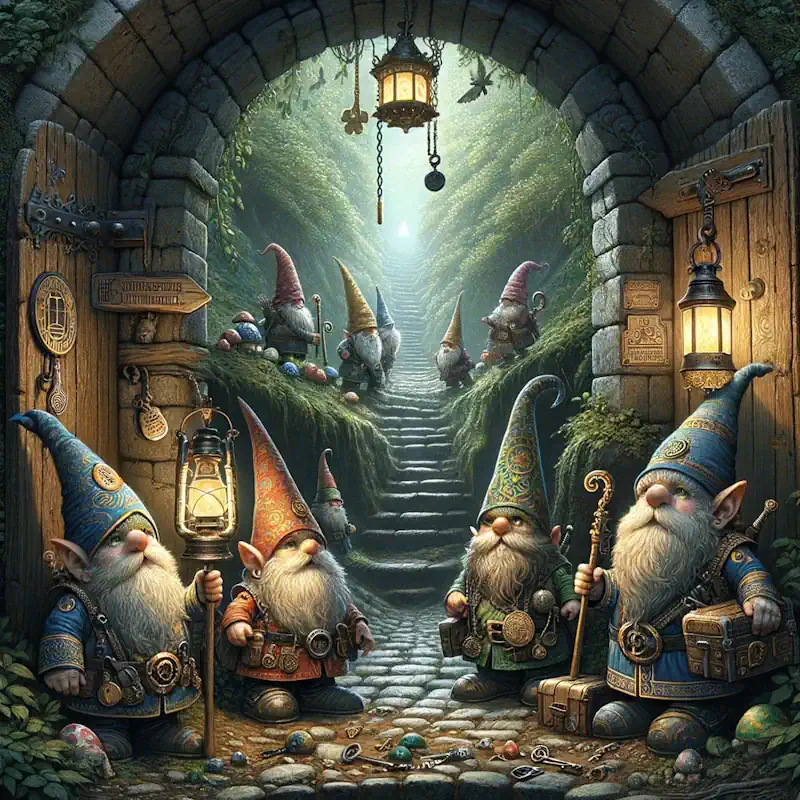
Mystical Abilities and Magical Powers
Gnomes possessed mystical abilities and magical powers that set them apart from ordinary beings. Their connection to the earth granted them the power to heal plants, control the weather, and communicate with animals. Some legends even suggest that gnomes could shape-shift, allowing them to conceal their presence among humans. These magical powers served as a testament to the extraordinary nature of gnomes and their indispensable role in mythical folklore.
Popular Gnome Legends and Tales
Gnomes have inspired countless legends and tales that have been passed down through generations. These stories capture the essence of gnomes and the enchanting world they inhabit. Let’s explore some popular gnome legends and tales that continue to captivate people’s imaginations.
The Gnome’s Gold: A Tale of Lost Treasure
One prevalent legend recounts the story of a gnome who possessed an invaluable stash of gold hidden deep within the earth. According to the tale, anyone who discovered the gnome’s gold would be blessed with immense wealth and good fortune. Many brave adventurers embarked on quests to find the gnome’s gold, but few were successful. This tale has become a symbol of the allure and mystery surrounding hidden treasures and the fantastical beings who guard them.
The Gnome and the Wise Witch: A Story of Friendship
Another heartwarming tale revolves around a gnome who befriends a wise witch living in the forest. Despite their differences in appearance, the gnome and the witch form a deep bond, sharing their knowledge and wisdom with each other. Together, they embark on magical adventures, solving mysteries and protecting the natural world from harm. This story exemplifies the importance of friendship and the power of unity, transcending superficial differences and celebrating the beauty of companionship.
The Battle of Gnomes and Trolls: An Epic Conflict
An epic conflict between gnomes and trolls has become the subject of many legendary tales. In these stories, gnomes are depicted as valiant warriors, defending their homes and treasures from the menacing trolls. The battles between gnomes and trolls symbolize the eternal struggle between good and evil, with gnomes representing light and protection, while trolls embody darkness and greed. These tales serve as allegories to remind us of the indomitable spirit of good in the face of adversity.
Gnome Folklore in Different Regions
Gnomes have left an indelible mark on folklore in various regions across the world. Each culture brings its unique interpretations and tales, showcasing the diverse beliefs and rich folklore surrounding gnomes.
Nordic Gnomes: Tomte and Nisse
In Nordic folklore, gnomes are known as “Tomte” or “Nisse.” These friendly creatures resemble elderly farmers and were believed to bring good fortune to households. They would assist with chores and protect families in exchange for small tokens of gratitude. Nordic gnomes are deeply ingrained in Scandinavian culture, with their presence celebrated during the festive season.
Germanic Gnomes: Heinzelmännchen
Germanic folklore introduces us to “Heinzelmännchen,” a group of small gnomes known for their love of cleanliness and order. Legend has it that these mischievous beings would secretly complete household chores during the night, providing relief to weary homeowners. However, they were known to become offended if their presence was acknowledged, disappearing forever. Germanic gnomes highlight the importance of gratitude and the magic found in everyday acts of kindness.
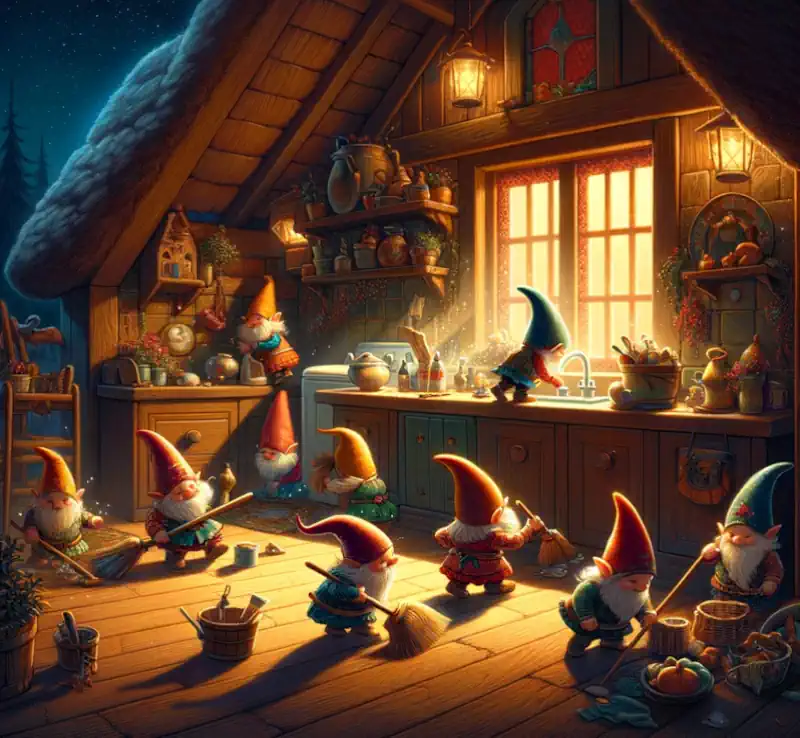
Slavic Gnomes: Leshy and Domovoi
Slavic folklore offers us “Leshy” and “Domovoi,” gnomes associated with forests and homes, respectively. Leshy, a forest spirit, protected the woodland creatures and ensured the balance of nature was maintained. Domovoi, on the other hand, resided in homes and acted as a benevolent protector to families. Both Leshy and Domovoi exemplify the deep reverence Slavic culture held for nature and the importance of guarding the sanctity of the home.
Gnome-like Creatures in Other Cultures
While gnomes have their unique characteristics, similar creatures can be found in other mythologies and folklore around the world. These parallel entities embody the spirit of gnomes while adding their cultural nuances to these mythical beings.
Dwarves in Norse Mythology
Dwarves are prominent in Norse mythology and closely resemble gnomes in many ways. Like gnomes, dwarves are known for their short stature and remarkable craftsmanship skills. They are skilled blacksmiths and artisans, fashioning incredible weapons and jewelry with their expertise. Dwarves, like gnomes, possess a deep affinity for the earth, emphasizing their connection to the natural world.
Kobolds in Germanic Folklore
Kobolds, often associated with mines and underground realms, bear a resemblance to gnomes in Germanic folklore. These mischievous beings are believed to protect mining operations and ensure the prosperity of miners. Like gnomes, kobolds possess magical abilities and can shape-shift to conceal their presence among humans. Their association with underground spaces and treasures makes them kindred spirits to gnomes.
Brownies in Scottish Folktales
Brownies, prevalent in Scottish folklore, share many similarities with gnomes. These helpful household spirits were believed to aid with household chores and guard against evil. Brownies were known to be loyal and dedicated beings, instilling a sense of comfort and security within homes. Their presence in Scottish folklore mirrors the warmhearted nature of gnomes and their inclination to assist humans.
Modern Perceptions and Depictions of Gnomes
Gnomes have transitioned from mythical creatures to beloved figures in modern times. Their whimsical appeal has inspired countless artistic works, literature, and even garden decor. Let us explore the contemporary perception and depiction of gnomes in today’s world.
Garden Gnomes: A Whimsical Addition to Landscapes
Garden gnomes garner immense popularity as charming additions to outdoor spaces. These figurines depict gnomes in various poses, often engaged in activities like gardening or playing musical instruments. Garden gnomes add a touch of whimsy and personality to landscapes, inviting a sense of magic and wonder into everyday life.
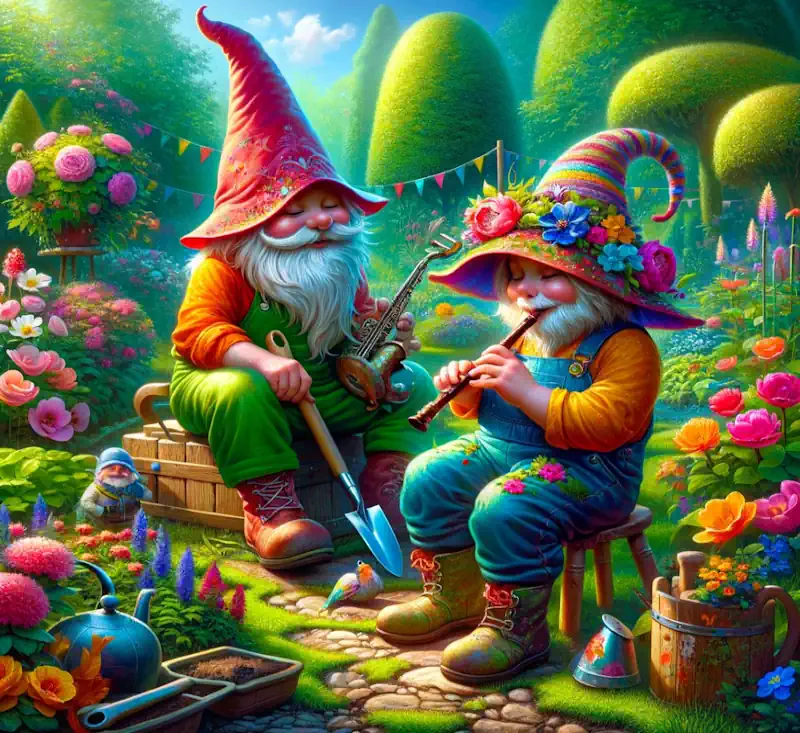
Gnomes in Art, Literature, and Media
Gnomes have permeated various forms of artistic expression, captivating audiences through literature, paintings, sculptures, and even movies. Artists and authors have drawn inspiration from the mythical world of gnomes, creating enchanting tales and captivating imagery that continue to fuel our fascination with these creatures. Their depiction in media has introduced gnomes to a wider audience, solidifying their place in popular culture.
Contemporary Folklore and Gnome Beliefs
Contemporary folklore surrounding gnomes has evolved with time, creating a vibrant tapestry of beliefs and experiences. Some individuals believe that gnomes can bring good luck and prosperity if treated with kindness and respect. Others see gnomes as guardians of nature, urging humanity to prioritize environmental conservation. Modern interpretations of gnomes reflect our changing values and the desire to preserve a sense of enchantment and wonder.
Gnome Festivals and Celebrations
To honor these beloved mythical creatures, gnome festivals and celebrations have emerged worldwide. These events bring together gnome enthusiasts, promoting a sense of community and shared adoration for all things gnome-related. Let’s explore some of the notable gnome festivals and celebrations.
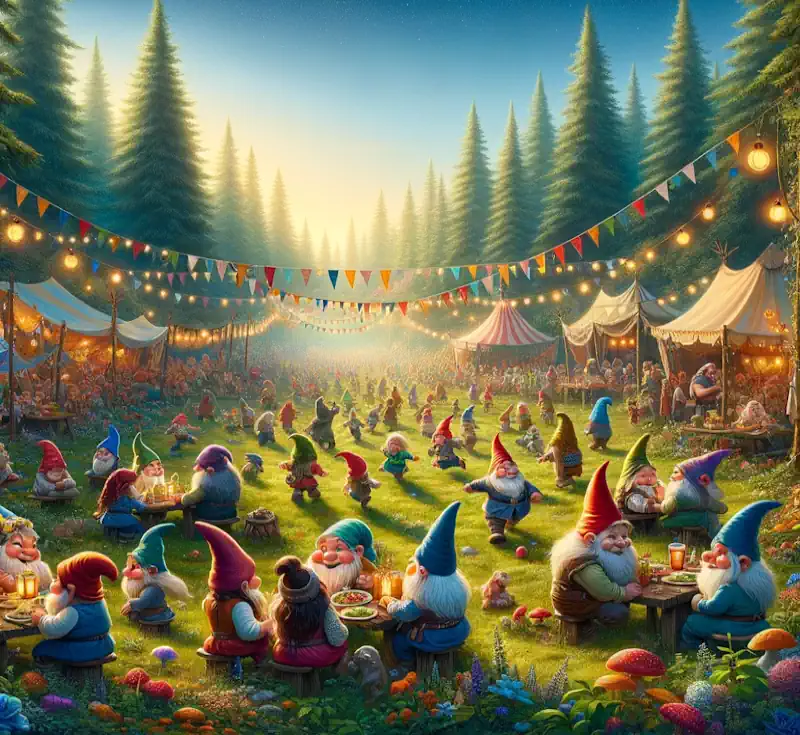
Gnomeo and Juliet: The Annual Gnome Gathering
The Gnomeo and Juliet Festival is an annual event held in celebration of gnomes. Inspired by Shakespeare’s famous play “Romeo and Juliet,” this festival invites gnome enthusiasts to immerse themselves in a world filled with gnome-themed activities. From costume contests to gnome parades, the event captures the whimsy and joy associated with these mythical beings.
World Gnome Day: A Global Celebration
World Gnome Day is a global celebration that takes place on June 21st each year. This day serves as an opportunity to honor gnomes and all that they represent. A variety of events are organized around the world, ranging from art exhibitions to storytelling sessions, aimed at fostering a greater appreciation for gnomes and their enduring influence on folklore.
Gnome Parades and Costume Contests
Gnome parades and costume contests provide a platform for gnome enthusiasts to express their creativity and share their love for these mythical beings. Participants dress up as gnomes, donning elaborate costumes and accessories, and parade through the streets, spreading joy and laughter. These events embrace the whimsical nature of gnomes and offer a delightful experience for participants and spectators alike.
The Magic of Gnomes: Exploring Their Influence
Gnomes continue to captivate us with their magical presence and influence. Beyond folklore and festivals, gnomes have found their way into modern spiritual practices and symbolize various aspects of the human experience. Let us delve into the profound influence of gnomes in contemporary times.
Gnomes in Modern Witchcraft and Pagan Practices
Gnomes hold a significant role in modern witchcraft and pagan practices. They are often associated with the earth element and are called upon for their guidance and wisdom. Some practitioners create gnome altars to connect with these mystical beings, fostering a sense of harmony with the natural world. Gnomes are seen as protectors and guides, offering spiritual assistance and grounding within magical practices.
Gnome Symbolism and Spiritual Associations
Gnomes carry profound symbolism, representing various aspects of the human experience. They embody qualities such as resilience, wisdom, and connection to nature. Gnome symbolism encourages individuals to embrace their innate connection with the earth and reminds them of the importance of preserving the environment. Gnomes also symbolize the magic and wonder that can be found in everyday life, urging people to appreciate the small miracles that surround them.
Communicating with Gnomes: Rituals and Practices
There are various rituals and practices that individuals employ to communicate with gnomes. Meditative practices involving visualization and connecting with the earth element are often utilized to establish a connection with these mythical beings. Offerings of natural elements such as flowers or herbs are made as a sign of respect and gratitude. Through these rituals and practices, individuals seek to tap into the knowledge and wisdom that gnomes possess.
Final Thoughts
Gnomes have captivated humanity with their whimsical charm and enduring presence in folklore. From their ancient pagan origins to their contemporary depiction in garden decor and spiritual practices, gnomes continue to hold a special place in the human imagination.
With their magical abilities, protective nature, and association with hidden treasures, gnomes remain enchanting beings, reminding us of the wonder and magic that can be found in the world around us.
Whether as guardians of the earth or as symbols of resilience, gnomes continue to inspire and captivate, leaving an indelible mark on the tapestry of mythical folklore.
